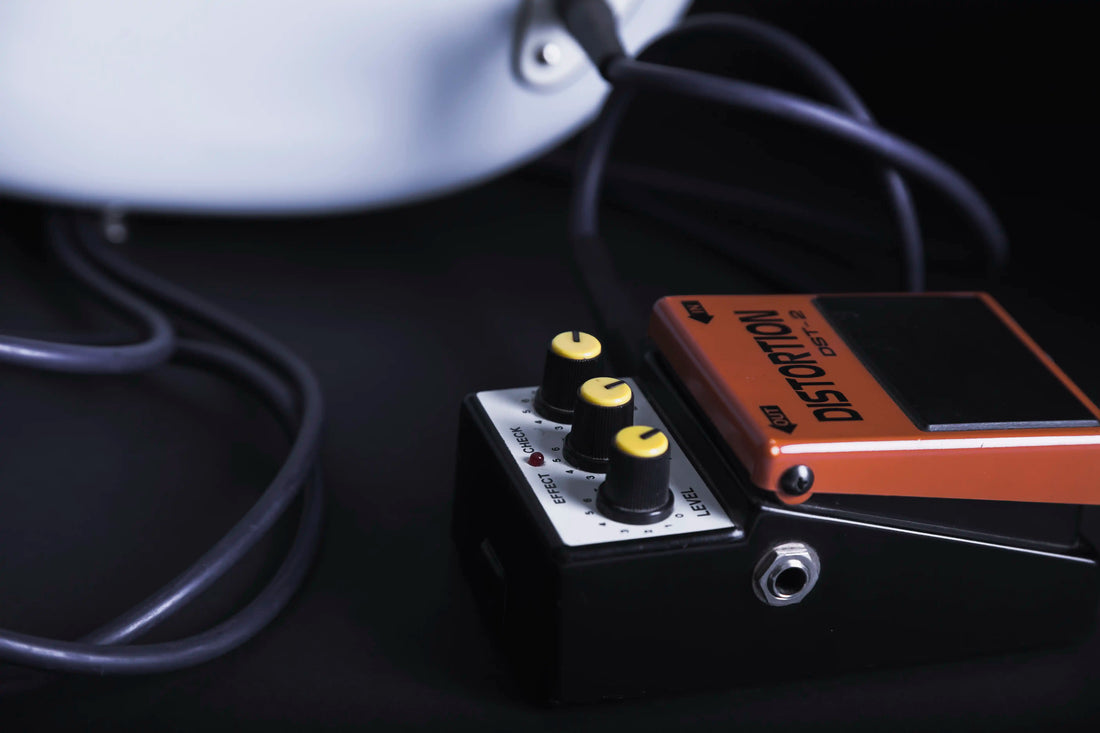How Do You Use Guitar Effects Pedals the Right Way?
If you’re new to using Guitar Effects, it can feel like stepping into a sonic playground filled with knobs, wires, switches, and strange names like overdrive, delay, and reverb. While effects pedals can completely transform your sound, knowing how to use them correctly is key to unlocking their potential. Whether you’re looking to emulate your favourite guitarist or develop a unique tone of your own, learning how to build and control your pedalboard is essential for any electric guitar player.
Many beginner players struggle with the basics, where to plug them in, what order to use them, and how each effect works in practice. This guide breaks it down clearly, step-by-step. And if you need help finding the right gear, Guitarlicious offers a solid selection of pedals, cables, accessories, and educational resources tailored to Malaysian musicians.
What Are Guitar Effects Pedals and Why Do They Matter?
Guitar effects pedals are external devices that modify the sound of your electric guitar before it reaches your amplifier. Some pedals add grit and gain (like distortion and overdrive), while others create spatial ambience (such as delay and reverb), and others still might modulate pitch, compress dynamics, or replicate synth-like tones. They allow guitarists to shape their sound with incredible nuance, whether you want to recreate the warmth of blues, the aggression of metal, or the dreaminess of shoegaze.
Pedals are typically placed on the floor in a “pedalboard” and are operated by foot while you play. Each pedal is powered (either by battery or adapter), connected to the next with patch cables, and activated with a footswitch. The variety of pedals is endless, which makes it crucial to understand each one before building a full chain.
Whether you’re after a solo boost or full atmospheric ambience, Guitarlicious’s accessories section has what you need to start exploring these sounds.
How Should You Arrange Guitar Effects Pedals?
The order in which pedals are placed, known as signal chain, greatly affects your tone. A standard beginner-friendly order is as follows:
- Tuner – always first, to receive the cleanest signal.
- Dynamics (Compressor, Wah) – next, to shape volume and attack.
- Gain (Overdrive, Distortion, Fuzz) – adds grit and punch.
- Modulation (Chorus, Phaser, Flanger) – creates movement and colour.
- Time-based (Delay, Reverb) – placed at the end to affect the entire signal.
You’re free to break these “rules,” especially if you're chasing experimental tones. However, understanding how pedals interact lets you control your sound more effectively. For example, placing delay before distortion might result in a muddier tone, while placing it after offers clear, echoing leads.
For multi-effects units or digital modellers, the same principles apply, but you have even more control via presets and custom routing. If you're unsure where to begin, the Guitarlicious blog covers pedal order, genre-specific setups, and common mistakes in easy-to-read guides.
What Are the Essential Guitar Effects Pedals for Beginners?
While it’s tempting to buy every cool-looking pedal you see, beginners should start with a few versatile staples. These typically include:
- Tuner Pedal: To ensure your instrument is always in pitch.
- Overdrive or Distortion: For adding crunch or sustain, perfect for rock and blues.
- Delay or Reverb: To add ambience and depth.
- Chorus: Great for clean modulation and shimmering tones.
These four pedals alone can shape an entire set of songs. They are also easy to integrate into any genre, from pop and indie to rock and worship music. Once you’re comfortable, you can branch out into more expressive or experimental effects like tremolo, octave, pitch shifter, or looper pedals.
Remember, each pedal adds its own noise floor and signal colour, so the fewer pedals you start with, the easier it is to hear what each one actually does. For a reliable introduction to pedalboards, explore brand bundles and patch cables in the Shop by Brands page.
How Do You Power and Maintain Guitar Effects Pedals?
Each effects pedal needs a clean, consistent power source. While many accept 9V batteries, it’s better to invest in a dedicated power supply or daisy chain for reliability. Power bricks ensure each pedal receives isolated current, reducing unwanted hum or hiss, especially useful when combining digital and analogue pedals.
Cables matter too. Use short patch cables between pedals to minimise signal loss, and keep power cables tidy to avoid tangles onstage. Regularly check your jacks and footswitches for crackling sounds, and replace worn-out cables promptly. Dust and moisture can build up over time, so wipe your pedals down after use and store them in a case or on a pedalboard with a cover.
If you’ve added pedals into your amp-speaker chain, make sure your amplifier is matched for guitar use, not all speakers will interpret effects properly, particularly those designed for vocals or flat EQ sources.
Manage your pedal inventory, restock your favourites, and build your wishlist with ease by logging into your Guitarlicious account.
FAQs
1. Can I plug pedals directly into a speaker without an amp?
No. Most pedals require a guitar amp to shape the signal properly. Plugging into a speaker without preamp stages can result in weak or unbalanced tone.
2. What’s the difference between overdrive and distortion?
Overdrive mimics the natural breakup of a tube amp, offering warm, dynamic gain. Distortion delivers a more aggressive, compressed sound suitable for heavier genres.
3. Should I buy single pedals or a multi-effects unit?
It depends on your goals. Single pedals offer better control and tone quality. Multi-effects units are cost-effective and great for experimenting with many sounds at once.
4. Why is my effects pedal making a humming sound?
Common causes include poor power supply, unshielded cables, or grounding issues. Isolated power bricks and quality patch cables usually solve the problem.
5. Where can I find quality guitar effects pedals in Malaysia?
You can browse a wide range of effects pedals and accessories at Guitarlicious, complete with local shipping, product support, and beginner bundles.
Final Chord: Mastering the Art of Guitar Effects
Using Guitar Effects is about experimentation, expression, and building a tone that’s uniquely yours. Whether you’re crafting shimmering clean tones or crunchy solos, the right pedals, combined with proper setup, can elevate your playing and broaden your creative palette. Begin by understanding what each pedal does, how it affects your signal chain, and how it complements your amplifier and speaker configuration. Over time, you’ll learn how to stack effects, discover new textures, and tailor your sound to any genre or performance setting. When you’re ready to explore new tones or upgrade your board, start with the essentials from Guitarlicious. With carefully curated gear, educational content, and support for players at every stage, you’ll always be a few pedals away from sonic inspiration.

